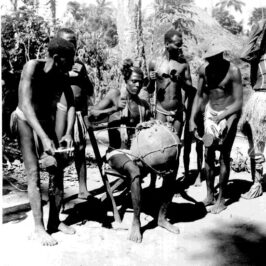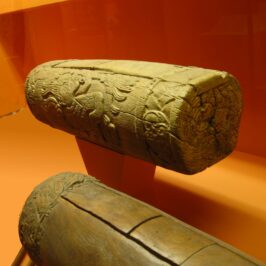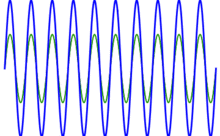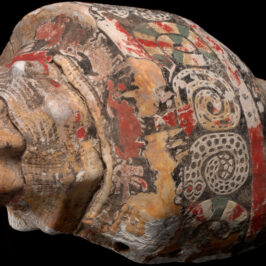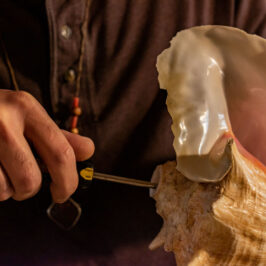
This is the Emperor Death Whistle, developed and perfected by Master flute maker Xavier Quijas over 30 years ago. This whistle features the Lord of the Dead with his Great Headdress.
When most people think of whistles they are reminded of police officers or referees at sports games, but the Aztec death whistle is an enigma within the aerophone (wind instrument) family. Whistles can be found throughout the world in many different designs. Almost every culture in history had some version of their own unique whistle, but death whistles stand out in the crowd.
For many years scientists thought these were nothing more than mere strange sounding children’s toys from the past. The Aztec’s brought the concept of zero into the western world, and also gave us the haunting sounds of their ancient death whistles along with a wide selection of other interesting aerophones to discover and research.
These unique whistles create a sound that reminds many people of spirits, ghosts, animals, screams and growls. Some describe the sounds as storms, wind, and other air elements, no wonder they have been found buried at the Aztec wind god (Ehecatl) temple. Seemingly simple instruments, these small noise makers produce a sound that grabs everyone’s attention that hears them.
Death whistles are fairly complex creations overall, and their interiors hide the evolved functional sound producing parts and unique chaos wind generator (which we explain later). Within this article we will discuss a few main topics about death whistles from Mesoamerican cultures and how you can make one yourself.
Starting with their origin and cultural purposes, we will discuss where death whistles come from and theories on how they were used. Then we will find out how they make the sounds that they are capable of producing, looking inside at their structures. Finally, we will have a brief explanation and video on how to make your own death whistles, or where you can get your hands on one.
Helpful information…
Within this article we will be using a few terms that you may not be familiar with. Let’s describe a few of them before we get too far into the information. Below are a few Britannica descriptions of the terms used frequently in this article.
“Mesoamerican civilization, the complex of indigenous cultures that developed in parts of Mexico and Central America prior to Spanish exploration and conquest in the 16th century. In the organization of its kingdoms and empires, the sophistication of its monuments and cities, and the extent and refinement of its intellectual accomplishments, the Mesoamerican civilization, along with the comparable Andean civilization farther south, constitutes a New World counterpart to those of ancient Egypt, Mesopotamia, and China.”
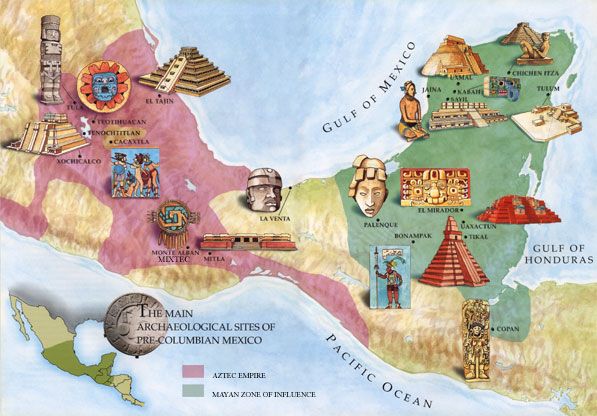
“Pre-Columbian civilizations, the aboriginal American Indian cultures that evolved in Mesoamerica (part of Mexico and Central America) and the Andean region (western South America) prior to Spanish exploration and conquest in the 16th century. The pre-Columbian civilizations were extraordinary developments in human society and culture, ranking with the early civilizations of Egypt, Mesopotamia, and China. Like the ancient civilizations of the Old World, those in the New World were characterized by kingdoms and empires, great monuments and cities, and refinements in the arts, metallurgy, and writing; the ancient civilizations of the Americas also display in their histories similar cyclical patterns of growth and decline, unity and disunity. “
“Aerophone, any of a class of musical instruments in which a vibrating mass of air produces the initial sound. The basic types include woodwind, brass, and free-reed instruments, as well as instruments that fall into none of these groups, such as the bull-roarer and the siren. Bagpipes and organs are hybrids with different kinds of pipes. The word aerophone replaces the term wind instrument when an acoustically based classification is desired. This classification also includes the chordophone (in which the initial sound is produced by vibration of a stretched string), the membranophone (produced by the vibration of a stretched membrane), the idiophone (produced by the vibration of a resonant solid material), and electrophone (produced or amplified by electronic means).”
“Ethnomusicology, field of scholarship that encompasses the study of all world musics from various perspectives. It is defined either as the comparative study of musical systems and cultures or as the anthropological study of music. Although the field had antecedents in the 18th and early 19th centuries, it began to gather energy with the development of recording techniques in the late 19th century. It was known as comparative musicology until about 1950, when the term ethnomusicology was introduced simultaneously by the Dutch scholar of Indonesian music Jaap Kunst and by several American scholars, including Richard Waterman and Alan Merriam. In the period after 1950, ethnomusicology burgeoned at academic institutions. Several societies and periodicals were founded, the most notable being the Society for Ethnomusicology, which publishes the journal Ethnomusicology. “
Now, let’s get back to the discussing death whistles!
Where are death whistles from?
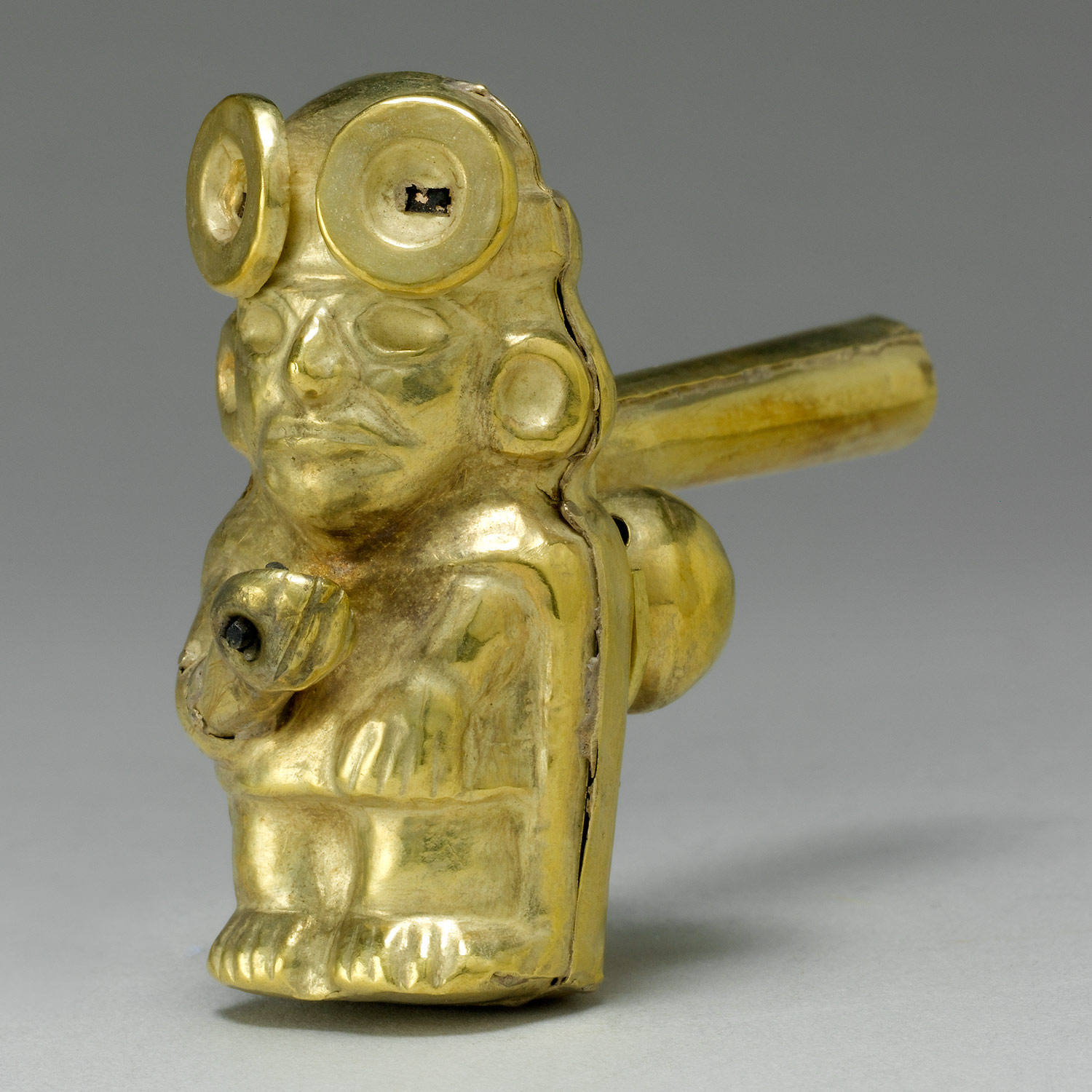
Date: 3rd–7th century – Geography: Peru
Culture: Moche – Medium: Gold
Dimensions: H. 2 in. (5.1 cm) Metal-Musical Instruments
Many different forms of whistles can be found all over the world. The pre-Columbian cultures produced some of the most varied and unique whistles of any period and region that we know of. Their spectrum of wind instruments is amazing, producing a plethora of styles and designs.
Cultures such as the Colima, Maya, Aztec, Inca, Chancay and many more in the Mesoamerican and Andean cultures of the “new” world produced some wonderful wind instruments. Within these cultures you can find some of the oldest aerophone artifacts (wind instruments such as; whistles, flutes, pan flutes, whistling vessels, and more). These areophones have been found in a number of various media; such as, clay, stone, bone, and metals.
The gold whistle artifact on the left displays some of the characteristics of Andean style aerophones, usually made to look like humans, animals, and other various important symbols of their cultures. This example is estimated to be from the 3rd-7th centuries and the Moche culture of Peru. We could theorize that this whistle probably played an important part of some esoteric ritual long lost to history.
Death whistles specifically were first found in burial tombs of mesoamerican origin. Whistles, flutes, and whistling vessels are common finds in many archeological projects of Central and South America. Most death whistle artifacts are estimated to be around 1,000 years old or less, and usually come from the Mayan and Aztec influenced regions.

The term “death whistle” was coined in the early 1990’s by engineer Roberto Velázquez Cabrera. Which he termed “whistles of death” when studying mesoamerican clay instruments.
The term became well know in 1999 when archeologists discovered the remains of a 20 year old man, who had been sacrificed in what is now the archaeological site of Tlatelolco, in Mexico City. The man held two whistles, one in each hand, both decorated in the shape of a human skull. These were the first documented death whistles found at a archeology site that was intact without being disturbed before excavation. Archeologist Salvador Guilliem Arroyo, who lead this excavation, found that these whistles produced some very unique sounds, that were quite haunting.
How were they used?
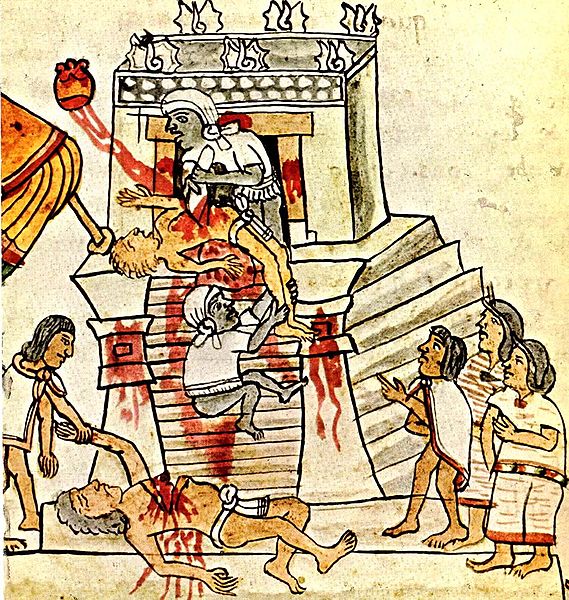
Archeologists believe death whistles were important to the mesoamerican cultures during sacrifice rituals and for burials. Found in burial sites, archeologists have concluded that these were important not only in burial rituals, but also in the after life. Those who died may have needed these objects to successfully get into the spirit world.
Roberto Velázquez Cabrera states that death whistles were not very common, and may have been reserved for sacrifices. He theorized that death whistles were probably blown just before a victim was killed, with the horrifying sounds guiding the souls into the after life. He also thinks the sounds could have also been used in battle to scare the enemy, and as psychological warfare.
The only somewhat historical reference that may shed light on the traditional uses of these noise makers comes from the quote below. None of the Spanish chroniclers who experienced Aztec culture ever mentioned these strange noise makers. None of the Aztec codex (pre-Columbian historical books) that survived conquest mention them either.

Contemporary Death Whistle- Xavier
Quijas Yxayotl https://www.yxayotl.com/product-page/cihuateteoh-female-death-whistle
The most remarkable festival in connection with Tezcatlipoca was the Toxcatl, held in the fifth month. On the day of this festival a youth was slain who for an entire year previously had been carefully instructed in the role of victim… He assumed the name, garb, and attributes of Tezcatlipoca himself… [as] the earthly representative of the deity…. He carried also the whistle symbolical of the deity [as Lord of the Night Wind], and made with it a noise such as the weird wind of night makes when it hurries through the streets.
(Lewis Spence, Myths of Mexico and Peru, London, 1913, pp. 69-70)
How do they make that haunting sound?
The fascinating sounds that these chaos wind generators create are unique to the aerophone family. The way the air flows inside the cavity of the whistles create organic fluctuations of air pressure, which produce their strange sounds. These disturbances could be compared to storm winds, a sound that many compare death whistles.
Roberto Velázquez Cabrera describes the chambers these whistles utilize to make their unique sounds as chaos wind resonators, because of the chaotic effects these open chambers produce. The chamber is the area behind the skull of the picture below. That chamber is the exit area of the sound produced by the round sound generator area directly below the mouthpiece channel (in the picture of the whistle cut in half below).
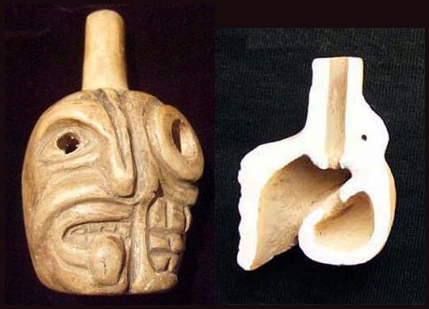
Blow in the mouth piece in the top of the whistle. The air is pushed into the channel and focused into the round sound generator, which splits the air and produces pressure changes that produce the sounds. Once the sounds are created they enter the chaos chamber, once inside the chaos chamber, the disturbances produce the unique “death whistle” sound and exit the bottom. The sounds produced can range from screaming and storm like sounds to animal call and growls.
The picture below are the first drawings of these noise makers produced by José Luis Franco published in 1971. As you can see, one of the drawings show a typical skull face design, while the other shows a owl face design and a interior view. Skulls have obvious symbology linked to death in our own culture, but owls are also representative of death and the spirit world in the Aztec cosmology. So the owl design further highlights the link to death and the spirit world the death whistles represented to the mesoamerican cultures. The picture below shows a great inside drawing of the sound generator and chaos wind resonator.

Making a death whistle
It takes some time to learn the techniques to make a functional whistle, even more time for the complex death whistle. If you don’t have some experience with clay and how to fire it, I would suggest just purchasing one from a known instrument maker. Search online to find a number of makers selling death whistle replicas. If you have some experience with pottery, I highly suggest trying to make yourself one. They are a fun project to embark on. Below is a great video explaining the process to make these wonderful whistles.
I also offer private classes on making death whistles, whistling vessels, and ceramic flutes. These may be public group workshops by the time you read this article (late 2019). Check out the shop page for upcoming workshops.
Overall, I hope this article was helpful and educational. We’ve briefly discussed where death whistles comes from, what they may have been used for, how they make their sounds, and how to make your own. For more information about them refer to the references listed at the end of this article.
Let me know if you enjoy my articles with comments and shares! Sign up for the newsletter if you want to stay up to date on future articles and events! Thanks for spending time reading this article and supporting my passion for indigenous instruments!!
References:
- Mexico: what were the terrifying “whistles of death” used to be, one of the great mysteries of the Aztec culture – 2018, Simón Posada Tamayo
- ‘Death whistle’: cremated example (re)discovered – 2015, Roberto Velázquez Cabrera
- Complex Whistles Found to Play Key Roles in Inca and Maya Life. – 1988, WILLIAM J. BROAD
- Archaeologists Recreate Aztec ‘Whistles of Death’. – 2008 AP
- Aztec Death Whistles Sound like Human Screams and May Have Been Used as Psychological Warfare – 2014, Liz Leafloor
- Archaeologists digging up pre-Columbian sounds – 2008, Julie Watson
- https://www.yxayotl.com/ – Xavier Quijas Yxayotl

